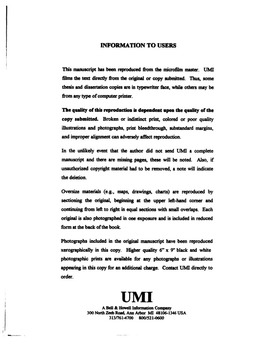| dc.contributor.advisor | Carnevale, David G., | en_US |
| dc.contributor.author | Garrett, Terence Michael. | en_US |
| dc.date.accessioned | 2013-08-16T12:29:53Z | |
| dc.date.available | 2013-08-16T12:29:53Z | |
| dc.date.issued | 1997 | en_US |
| dc.identifier.uri | https://hdl.handle.net/11244/5556 | |
| dc.description.abstract | Furthermore, I found that the interpretation of events leading to the Challenger decision was subject to the analyst's preconception of what transpired. I confined my research primarily to theoretical interpretations of the the launch event in order to assess the state of the field of public administration generally and in particular the subfield of organization theory. There are numerous qualitative theoretical conceptions available to scholars. These theories, or images, are valuable for analyzing a complex event like the Challenger space launch. There is no single theory or paradigm which completely explains the launch as there is no single all-encompassing theory which adequately explains human behavior in a predictable fashion in the social sciences. Instead, we (I mean we, the academic community) render scholarly judgments concerning events that we study using theoretical tools available to us. In a similar fashion, I have presented an analysis of the Challenger space launch decision. We offer judgments to members of organizations, particularly managers, to provide them with insights (the practitioners who live in and depend on the work-world, i.e., executives, workers, managers, clients and investors) so that tragic consequences may not result to human beings in the future. As such, I used Hummel and Carnevale's concept of the "knowledge analytic" to tie together some of the interpretations offered by scholars analyzing the Challenger incident. The knowledge analytic provides us with a means to appreciate and recognize that where we are in an organization affects how we perceive ourselves, each other, and the work we are involved in. "Knowledges" incompatibility is a primary cause for people in organizations to not come to an understanding about what should be done in order to accomplish a task in an organization or how we cooperate in completing organizational endeavors. I discovered in my case study analysis of the Challenger launch decision that a failure of recognizing differences in knowledges, particularly between executives, managers and engineers, led to disaster. (Abstract shortened by UMI.) | en_US |
| dc.description.abstract | The Challenger space shuttle launch incident on January 28, 1986 is a fascinating topic for comparison of theoretical conceptions offered by organization theorists. By examining this case study we can see the intricate complexities and richness of human activity surrounding a single event in organization theory. The case study method is useful for exploring theories of organization. This study provided me the opportunity to analyze a relatively widely known case within a government agency and make a contribution to the field of public administration. What is notable about this topic is that there was plenty of information concerning problems with the space shuttle system, such as weather-related and technical issues, available to managers prior to the launch to prevent the event from transpiring and yet the decision to launch took place anyway. Many scholarly interpretations have been offered so that this incident (case study) provided much theoretical evidence for consideration. These interpretations were oftentimes conflicting or contradictory in their respective interpretation of events. In order to analyze the disparate theories explaining the launch decision, I used Burrell & Morgan's metatheoretical frameworks method, which consists of functionalism, radical humanism, radical structuralism and interpretivism, to organize the various theoretical explanations about the Challenger space shuttle launch. | en_US |
| dc.format.extent | viii, 207 leaves : | en_US |
| dc.subject | Sociology, Theory and Methods. | en_US |
| dc.subject | Organizational behavior Case studies. | en_US |
| dc.subject | Political Science, Public Administration. | en_US |
| dc.subject | United States National Aeronautics and Space Administration Management. | en_US |
| dc.subject | Decision making Case studies. | en_US |
| dc.subject | Aerospace industries United States Management. | en_US |
| dc.subject | Challenger (Spacecraft) Accidents. | en_US |
| dc.title | Images of decision-making and the launch of the Challenger space shuttle. | en_US |
| dc.type | Thesis | en_US |
| dc.thesis.degree | Ph.D. | en_US |
| dc.thesis.degreeDiscipline | Department of Political Science | en_US |
| dc.note | Source: Dissertation Abstracts International, Volume: 58-09, Section: A, page: 3717. | en_US |
| dc.note | Chair: David G. Carnevale. | en_US |
| ou.identifier | (UMI)AAI9810313 | en_US |
| ou.group | College of Arts and Sciences::Department of Political Science | |
